Structures and Luminescence Property of Two Co(Ⅱ) and Cd(Ⅱ)Supramolecular Coordination Networks Created via Synergistic Effect of Coordination Bonds and Secondary Interactions
REN Yong?HeLI Lu?ChaoDING Qi?HuiHUANG Yong?Qing*,ZHAO Yue
(1College of Chemical and Biological Engineering,Shandong University of Science and Technology,Qingdao,Shandong 266590,China)
(2State Key Laboratory of Coordination Chemistry,School of Chemical and Chemical Engineering,Nanjing University,Nanjing 210023,China)
Abstract:Two complexes with chemical formulas[Co(L)2(H2O)4]·2H2O(1)and[Cd(L)2(H2O)]·3H2O(2)were obtained by the reaction of 3?carboxy?1?(4?carboxybenzyl)?pyridinium bromide((H2L)Br)with corresponding Co(Ⅱ)and Cd(Ⅱ)metal salts.Crystal structure analysis reveals that 1 is a neutral mononuclear complex,which possesses abundant hydrogen bond and π?π interaction components and can be used as supramolecular synthons.In the case of 1,mononuclear[Co(L)2(H2O)4]coordination entities are first joined via hydrogen bonding to produce channel?structured 2D layers,which are further stacked via π?π stacking effect in an interdigitating fashion,generating a 3D porous supramolecular assembly.2 features a polymeric 1D zigzag chain structure,which is connected via π ?π interactions between pendent L ligands,resulting in the formation of 1D ladder chains.Such 1D ladder chains are further combined into wave?like 2D sheets via another two kinds of π?π stacking between two adjacent side rails of 1D ladder chains.Such 2D sheets are further assembled via eight types of O—H…O hydrogen bonds to form a 3D supramolecular structure.According to topological viewpoint based on 1D chains,the 3D structure of 2 can also be deemed as the plywood?like array.In addition,2 shows strong ultraviolet fluorescence emission with an average life?time of 2.54 ns.CCDC:1865438,1;1865439,2.
Keywords:Co(Ⅱ) complex;Cd(Ⅱ) complex;secondary interaction;pyridinium;luminescence property
0 Introduction
In the past decades,supramolecular coordination chemistry has been booming.Much attention has been focused on the structures and properties of supramolec?ular coordination compounds(SCCs).The driving force of related research mainly stems from the variability and tunability of structures of SCCs,as well as their potential applications[1?6].So far,according to interac?tions between building blocks,2D and 3D supramolec?ular coordination networks(SCNs)can be divided into two categories.The 2D and 3D SCNs assembled mainly by coordination bonds,which we are more concerned with,belong to the first category,in which the weak secondary interactions play subsidiary role[7?9].The 2D and 3D SCNs constructed by the link of coordination?bonded 0D,1D,even 2D SCCs via weak secondary interactions,fall into the second category,in which coordination bonds and weak secondary interactions play synergistic effects[10?12].For instance,with the aid of N—H…Cl and C—H…Cl hydrogen bonds,mono?meric[Ln(ntb)Cl3](ntb=tris(benzimidazole?2?ylmethyl)amine)are consolidated to form two series of thermally stable porous SCNs,featuring robustness and dynamics upon guest uptake[10a].For the latter,relatively little at?tention has been paid,so far,therefore more effort needs to be paid to continue researching them.
Secondary interactions include hydrogen bonds,π?πstacking interactions,halogen?halogen,silver?silver,etc.,which have widely taken part in the construction of SCNs[13?16].To make full use of these secondary inter?actions,deliberative selection of building blocks,espe?cially ligands,is crucial.To obtain hydrogen bonds,the ligands should possess abundant hydrogen donors and/or acceptors[17?18].To obtainπ?πstacking interactions,ligands should own aromatic moieties[19?20].Pyridiniums containing carboxylate,possessing both hydrogen bond?ing acceptor and aromatic moieties,are apt to generate hydrogen bonding andπ?πstacking interaction,which make them good candidates for studying the synergistic effect of coordination bonds and secondary interactions on the final structures of SCNs.Up to now,a variety of meaningful SCNs have been reported[21?24].For example,Huang and his coworkers presented two 1D porous Cd(Ⅱ)metallacyclicchainswith4?carboxy?1?(4?carboxybenzyl)pyridinium ligand,which are further assembled into 2D layer viaπ?πstacking interactions,displaying interesting pseudopolymorphism phenomenon[11].With this in mind and as a continuation of our study,we select 3?carboxy?1?(4?carboxybenzyl)?pyridinium bro?mide((H2L)Br,Scheme 1),isomer of 4?carboxy?1?(4?carboxybenzyl)pyridinium bromide ligand,and Co(Ⅱ)and Cd(Ⅱ) metal salts to assembly supramolecular coor?dination networks.Specially,(H2L)Br ligand has the fol?lowing advantages:firstly,the organic skeleton of(H2L)Br ligand is semirigid,which gives it the ability to adjust its configuration as needed;secondly,it has two different aromatic moieties:phenyl ring and electron deficient pyridyl ring,which provides us a chance to compare the difference ofπ?πstacking between differ?ent type of aromatic moieties;lastly,in contrast to fixed V?shaped configuration with its isomer 4?carboxy?1?(4?carboxybenzyl)pyridinium bromide ligand,(H2L)Br pos?sesses more flexible configuration[25?26].

Scheme 1 Molecular structure of ligand(H2L)Br
In this paper,we present two SCNs,namely[Co(L)2(H2O)4]·2H2O(1)and[Cd(L)2(H2O)]·3H2O(2),and show how two 3D SCNs have been achieved by secondary interactions.In addition,we also studied the fluorescence property of 2.
1 Experimental
1.1 General procedures
All commercially available reagents and chemi?cals are of reagent grade and used directly as received.The ligand(H2L)Br was synthesized according to the previously reported literature[27].Elemental analyses(C,H and N)were executed on a Perkin?Elmer 240C Ele?mental Analyzer.Infrared spectra data were obtained on a Nicolet 380 FT?IR spectrometer using KBr pel?lets.Powder X?ray diffraction(PXRD)analyses were performed on a Rigaku UltimaⅣdiffractometer with CuKαradiation(λ=0.154 18 nm)at 40 kV and 40 mA in a 2θrange of 5°?50°.The phase purity of crystalline samples of 1 and 2 were ensured by comparing experi?mental PXRD values with calculated ones(Fig.S1 and S2,Supporting information),which were obtained via simulation of single crystal data using Mercury soft?ware[28].Thermogravimetric analysis(TGA)was per?formed under N2atmosphere using a Mettler?Toledo thermal analyser.The photoluminescent spectra were measured using a Hitachi F?4600 FL spectrophotometer.The luminescence lifetime studies were conducted with a HORIBA Jobin Yvon Fluorolog?3 spectro?fluorometer fitted with a time?correlated single photon counting detector and a NanoLED pulsed laser diode excitation source(340 nm).UV?Vis spectra were recorded on a Hitachi UH4150 spectrophotometer.
1.2 Synthesis of[Co(L)2(H2O)4]·2H2O(1)
An aqueous solution(5 mL)of(H2L)Br(33.8 mg,0.1 mmol)and NaOH(8.0 mg,0.2 mmol)was mixed with an aqueous solution(5 mL)of CoCl2·6H2O(23.8 mg,0.1 mmol),which was then filtered to provide a clear solution.After about fifteen days,red?purple tuft?ed crystals were obtained by slow diffusion of acetone into the clear reaction solution in 40%yield.Anal.Calcd.for C28H32CoN2O14(%):C,49.49;H,4.75;N,4.12.Found(%):C,49.52;H,4.71;N,4.03.IR(KBr,cm-1):3 346s,3 079w,1 639s,1 608s,1 545s,1 496m,1 394vs,1 374vs,1 215m,1 188m,1 137w,1 116w,1 017w,913w,838w,768s,687m,650m,554w,479w,413w.
1.3 Synthesis of[Cd(L)2(H2O)]·3H2O(2)
(H2L)Br(33.8 mg,0.1 mmol),Cd(OAc)2·2H2O(53.2 mg,0.2 mmol),NaOH(8.0 mg,0.2 mmol)and water(10 mL)were sealed in a Teflon?lined stainless?steel container(20 mL),and then heated at 150℃for 72 h.After cooling to room temperature(5 ℃ ·h-1),colorless transparent tufted acicular crystals were obtained in 62%yield.Anal.Calcd.for C28H28CdN2O12(%):C,48.25;H,4.05;N,4.02.Found(%):C,48.17;H,4.12;N,4.08.IR(KBr,cm-1):3 440vs,2 991w,1 640s,1 611s,1 483w,1 390s,1 351w,1 182w,1 000w,767w,606m.
1.4 Crystal structure determination
Data collections of single crystal structure of complexes 1 and 2 were carried out using Bruker Smart Apex Ⅱ CCD diffractometer with graphite?monochromatized MoKαradiation(λ=0.071 073 nm)in theω?φscan mode.The structure solutions and refinements of 1 and 2 were achieved by direct meth?ods using the SHELXS?97 program and by full?matrix least?squares techniques onF2using the SHELXL ?2014 program,respectively.All non?hydrogen atoms were refined with anisotropic thermal parameters.All hydrogen atoms bound to carbon atoms were placed at the theoretically calculated positions and refined using a riding model.The positions of H atoms of H2O were found in the difference electron density.Details of the crystal parameters,data collection and refinement for 1 and 2 are summarized in Table 1.Selected bond lengths and bond angles of 1 and 2 are collected in Table 2,and the relevant data for hydrogen bonding andπ?πinteractions are given in Table 3 and 4.
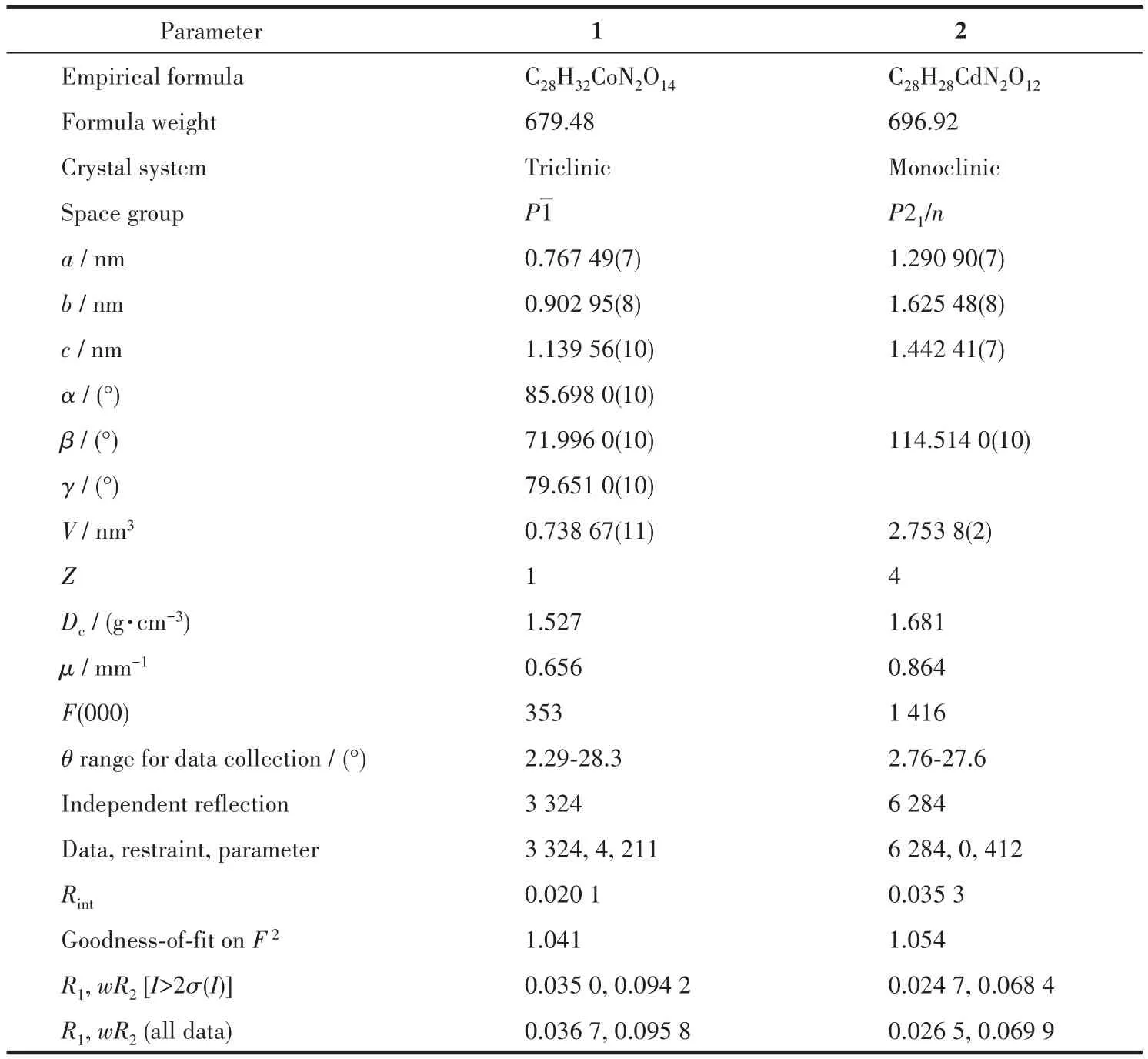
Table 1 Crystal data and structure refinements for complexes 1 and 2
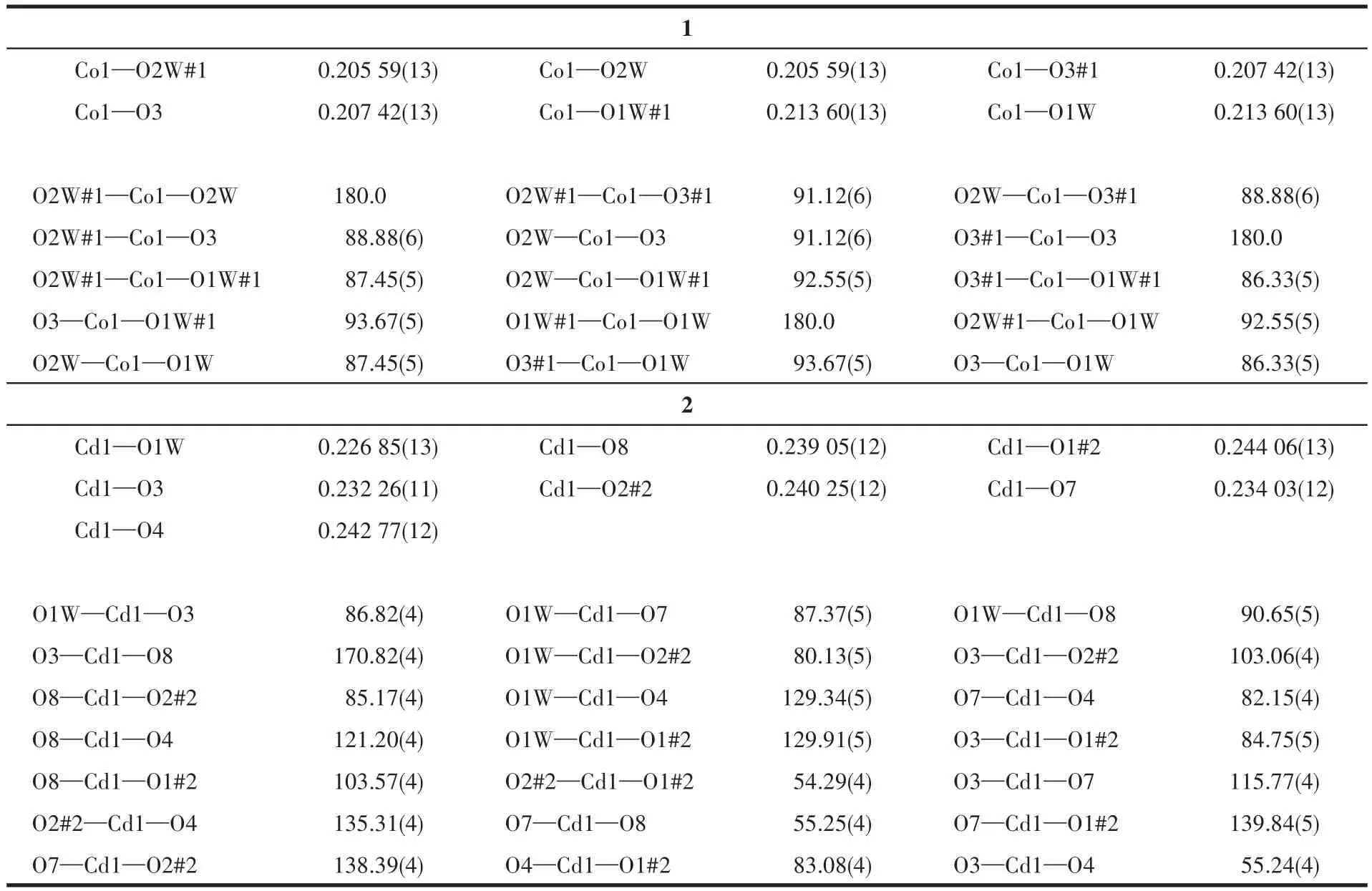
Table 2 Selected bond lengths(nm)and angles(°)for complexes 1 and 2
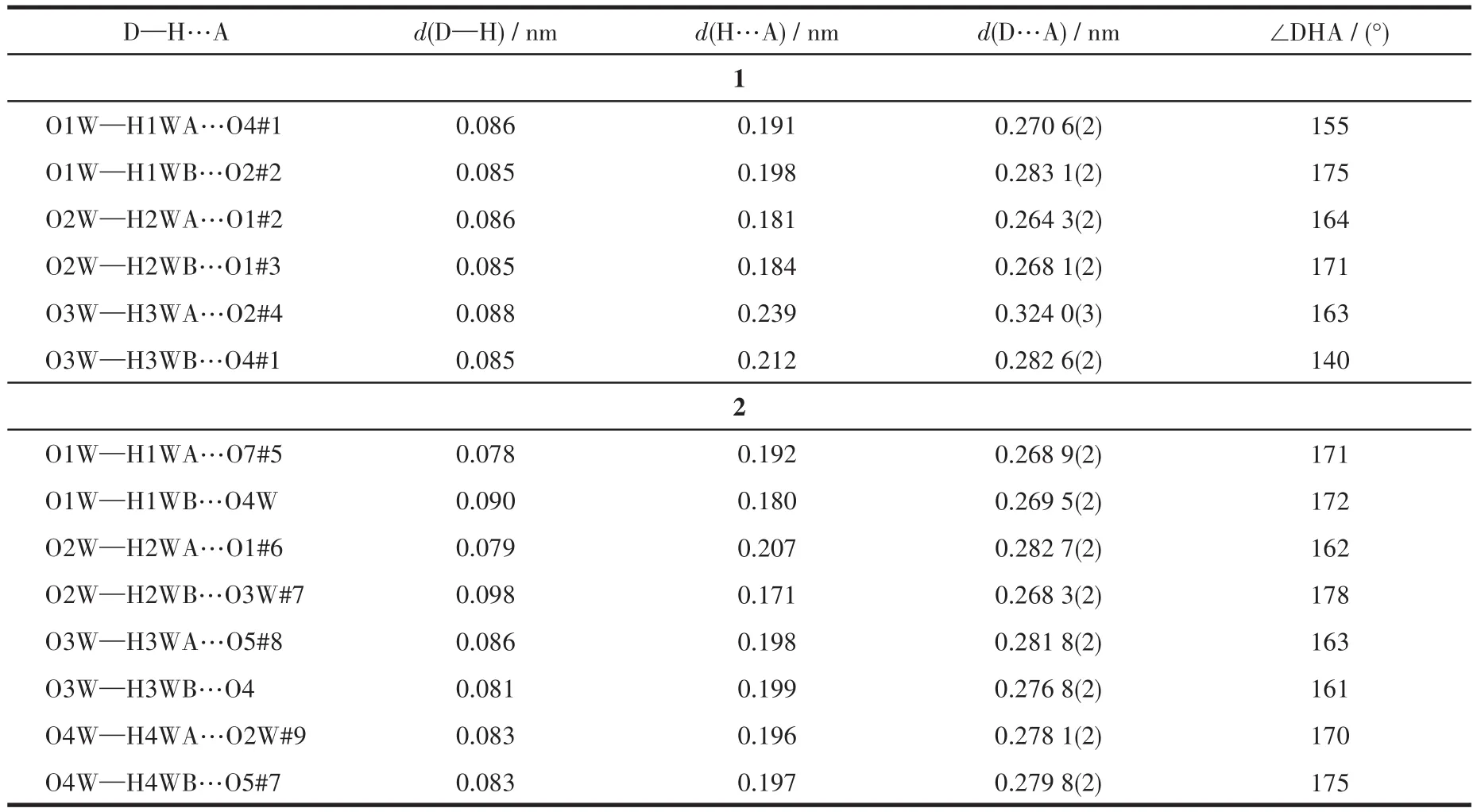
Table 3 Hydrogen bond parameters for complexes 1 and 2

Table 4 π-π interactionsafor complexes 1 and 2
CCDC:1865438,1;1865439,2.
2 Results and discussion
2.1 Crystal structure of[Co(L)2(H2O)4]·2H2O(1)
Crystal analysis revealed that complex 1 possesses aneutralmononuclearcoordinationentity[Co(L)2(H2O)4],which crystallizes in the triclinic space groupP1.The repeat unit of 1 contains half Co(Ⅱ) ions,one deproton?ated L ligand,two coordinated water molecules and one lattice water molecule.Fig.1a shows the coordination environment of Co(Ⅱ)centers,which lie on the inver?sion center.Each Co(Ⅱ)ion exhibits an octahedral geometry with{O6}donor set,in which four O atoms from four coordinated water molecules constitute theequatorial plane(Co—Owaterdistances:0.205 59(13)and 0.213 60(13)nm)and the rest two O atoms from two L ligands occupy two apex sites(Co—Ocarboxyalte0.207 42(13)nm).
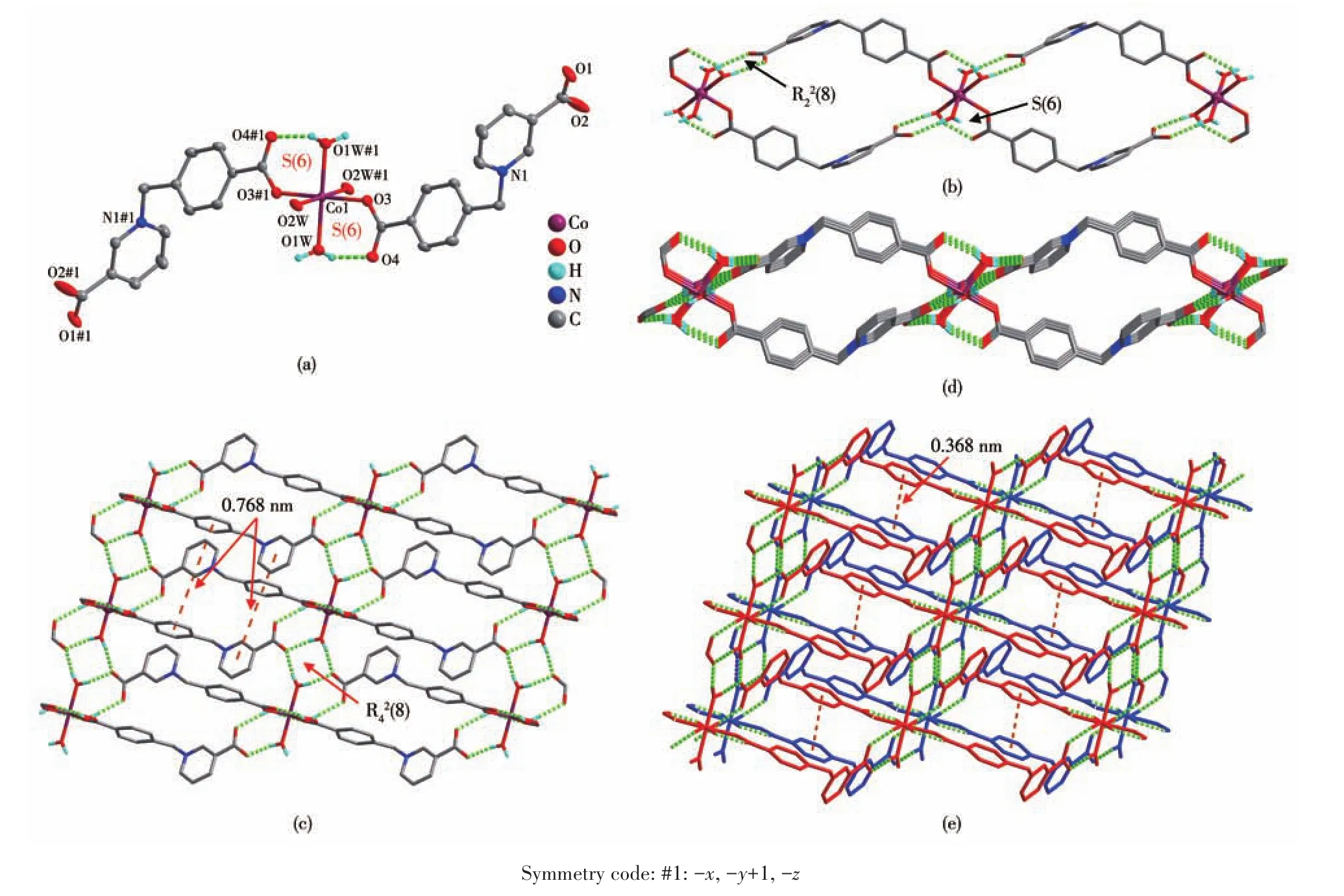
Fig.1 (a)Coordination environment of Co(Ⅱ)ions in 1 with 50%ellipsoid probability level,where the dashed lines represent intramolecular hydrogen bonds with graph?set symbol of S(6);(b)1D beaded chain generated by O—H…O hydrogen bonding in 1;(c)Side view of 2D network generated by O—H…O hydrogen bonding in 1;(d)Top view of 2D network generated by O—H…O hydrogen bonding in 1,showing side?by?side 1D channels along a?axis;(e)View of 3D supramolecular framework of 1 assembled via π?π interaction,showing interdigitating packing of 2D layers
The neutral[Co(L)2(H2O)4]coordination entities,containing abundant potential hydrogen bond compo?nents:O—H proton donors and O proton acceptors from coordinated watermoleculesand carboxylic groups,can serve as synthons to form supramolecular network via hydrogen bonds,which is consistent with its IR spectrum(Fig.S3)[23,29].Crystal data affirmed that one type of intramolecular hydrogen bond(O1W…O4#1 0.271 nm,symmetry code:#1:-x,1-y,2-z)with graph?set symbol of S(6) in the coordination entity[Co(L)2(H2O)4](Fig.1a)and another three kinds of clas?sic O—H…O intermolecular hydrogen bonds take part in the creation of supramolecular network of 1(Table 3).Firstly,[Co(L)2(H2O)4]coordination entities are connected together through intermolecular hydrogen?bonded cyclic dimers with graph?set symbol of R22(8)(O1W…O2#2 0.283 nm,O2W…O1#2 0.264 nm,symmetry code:#2:-x,-y,1-z),which consist of one deprotonated pyridine carboxylic group and two adja?cent coordinated water molecules,leading to the forma?tion of 1D beaded chain with Co…Co separation of 1.506 nm(Fig.1b).Interestingly,a similar hydrogen?bonded 1D Co(Ⅱ) chain with V?shaped 4?carboxy?1?(4?carboxybenzyl)pyridinium ligand has been reported by Chen and his coworkers,while,in the presence of NaN3,a 2D Co(Ⅱ)coordination network based on the chain with(μ?1,1?N3)(μ?1,3?COO)2bridges has been obtained by Gao and his coworkers[30?31].Then,above ?mentioned 1D beaded chains are linked together,lead?ing to the formation of 2D layers via hydrogen?bonded cyclic tetramers with graph?set symbol of R42(8)(O2W…O1#3 0.268 nm,symmetry code:#3:-1+x,1+y,1+z)alonga?axis(Fig.1c).It is noteworthy that hydrogen?bonded cyclic dimers and tetramers share the common side.Moreover,the hydrogen?bonded M2(H2O)6L2rings of 1D beaded chain are almost perpendicular to the 2D layer,so viewed alonga?axis,the 2D layers are com?posed of side?by?side 1D tubes(Fig.1d).From a topo?logical viewpoint,the hydrogen?bonded network of 1 can be described as(4,4)grid.Intriguingly,one type of sides of this grid actually adopts double?bridge fashion to link two adjacent Co(Ⅱ)centers,resulting in the for?mation of M2(H2O)6L2rings.In another word,the above?mentioned 1D tubes consist of parallel M2(H2O)6L2rings.However,the shortest distances between two cen?troids of parallel phenyl rings or pyridyl rings in 1D tubes are both 0.768 nm,beyond the scope ofπ?πinteractions(Fig.1c).To achieve dense packing,these 2D layers take an interdigitating way to produce a 3D porous structure.At the same time,the shortest dis?tance between two centroids of parallel phenyl rings(ring 1:C8,C9,C10,C11,C12,C13)from two different layers is shortened to 0.368 nm(Table 4),leading to the formation ofπ?πstacking interactions[14](Fig.1e).Whereas,there is noπ?πstacking between charged pyridyl rings for their head?to?tail alignment.Finally,especially to deserve to be mentioned,after interdigitat?ing packing,the 1D channels in 1 remain and are occu?pied by lattice water molecules stabilized by O—H…O hydrogen bonds(Table 3).
It is noticeable,however,that in our previous work a totally different 3D hydrogen?bonded network,consisting of analogous[Cd(L1)2(H2O)4]supramolecular synthons similar to[Co(L)2(H2O)4],has been reported[24],where L1 represents semirigid angular 1?carboxymeth?ylpyridinium?4?carboxylate(Scheme 2).By detailed structure analysis,we notice that four coordinated water molecules in above two complexes display the same hydrogen bonding modes and the structure differ?ences between them mainly result from different flexi?bility of L and L1.As shown in Scheme 2,L ligand in 1 has three rotating directions,larger than two ones of L1 ligands in[Cd(L1)2(H2O)4]supramolecule,meaning L ligand features greater flexibility.
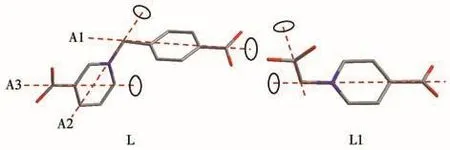
Scheme 2 Flexible conformation of L and L1 ligands
2.2 Crystal structure of[Cd(L)2(H2O)]·3H2O(2)
In contrast to the mononuclear structure andP1 space group of 1,complex 2 displays an infinite 1D zigzag chain structure andP21/nspace group,in which each asymmetric unit contains one Cd(Ⅱ)ion,two L ligands,one coordinated water molecule and three lattice water molecules.Each Cd(Ⅱ)center is bound to seven coordinated oxygen atoms,six O atoms of which are from three chelate carboxylate and the rest one is from one water molecule.As depicted in Fig.2a,if che?late carboxylate is deemed as one coordination site,the geometry of Cd(Ⅱ)ions is tetrahedron.The average bond distances of Cd—Ocarboxylateand Cd—Owaterare 0.238 74 and 0.226 85 nm,respectively,which are comparable to the reported Cd—O bond lengths in other Cd(Ⅱ)complexes with positional isomer of L ligand[25]and longer than Co—O bond distances in 1.The bond angles range from 54.29(4)°to 139.84(5)°,among which three smallest angles of 54.29(4)°,55.24(4)°and 55.24(4)°are bite angles of three chelate carboxylate anions(Table 2).
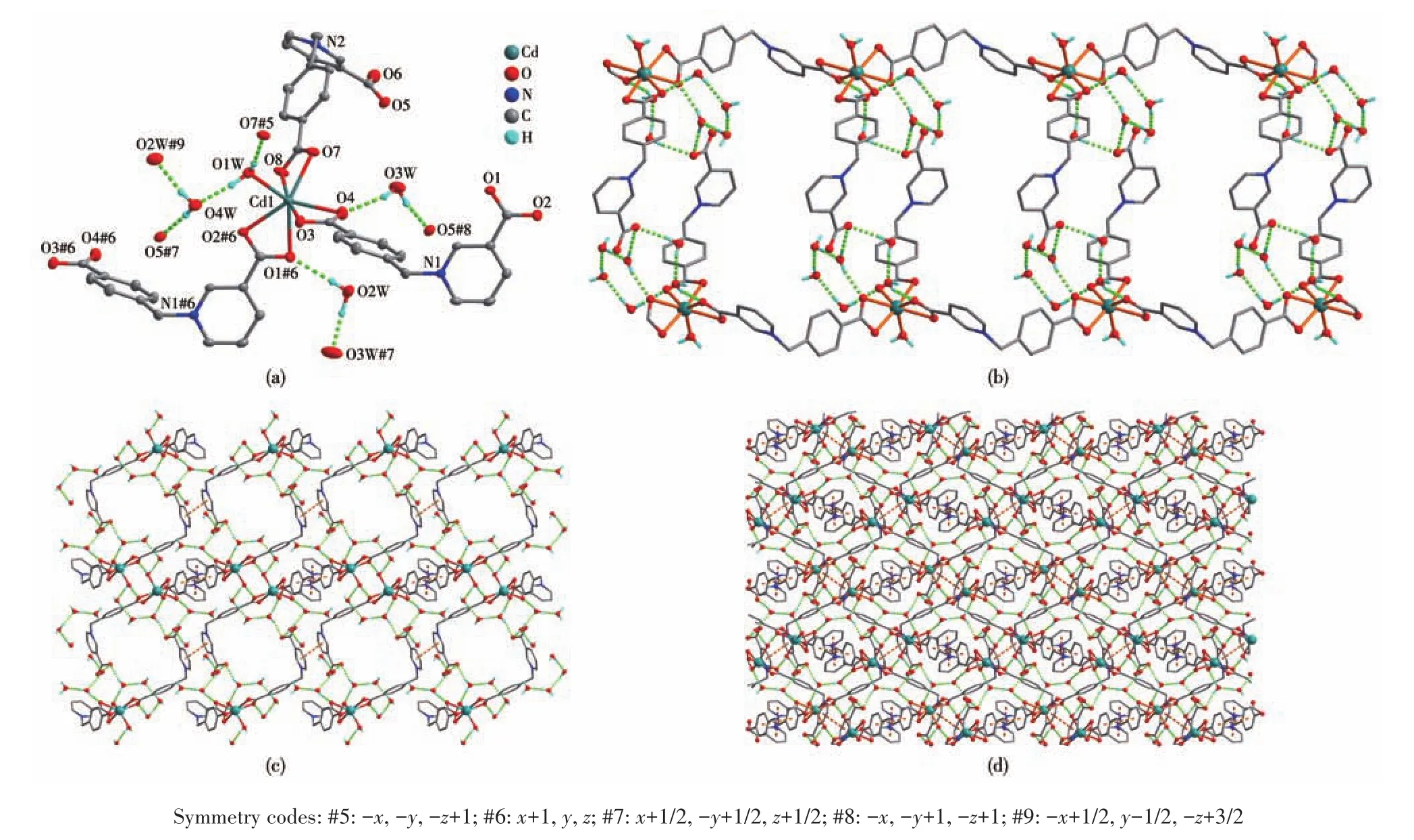
Fig.2 (a)Coordination environment of Cd(Ⅱ)ions in 2 with 50%ellipsoid probability level,where the dashed lines represent intermolecular hydrogen bonds;(b)View of 1D tube showing intermolecular hydrogen bonds between two 1D zigzag chains(dashed lines);(c)View of 3D framework consisting of 1D tubes,showing hydrogen bonds(green dashed lines)and π?π interactions(orange dashed lines);(d)3D supramolecular structure of 2 assembled via hydrogen bonds(green dashed lines)and π?π interactions(orange dashed lines)
In contrast to one type of L ligand in 1,two types of L ligands are founded in 2.One type of L ligand functions as terminal ligands,similar to that in 1,but the carboxylate anion far away from pyridyl motif in 2 adopts chelate mode,rather than mono?dentate mode as taken in 1,to bind to central Cd(Ⅱ)ions.The other type of L ligand serves as bridging ligand,taking bis?chelate mode to link two Cd(Ⅱ) ions.At the same time,regardless of pendent L and coordinated water molecule,Cd(Ⅱ) ions can be treated as 2?connected nodes,which connect with V?shaped 2?connected L linkers to give rise to 1D polymeric zigzag chains with shortest Cd…Cd distance of 1.291 nm along crystallo?graphica?axis(Fig.2b).In contrast,by the reaction of Cd(Ⅱ) salts and rigid V?shaped 4?carboxy?1?(4?carboxy?benzyl)pyridinium ligand,three same 1D Cd(Ⅱ) metalla?cyclic chains with different space groups,rather than 1D zigzag chain of 2,have been synthesized[11,32].Intriguingly,two adjacent 1D zigzag chains are joined face to face by abundant intermolecular O—H…O hydrogen bonds with graph?set symbol of R55(12)(O3W…O4 0.277 nm,O2W…O3W#7 0.268 nm,O4W…O2W#9 0.278nm,O1W…O4W 0.270nm,O1W…O7#5 0.269 nm;symmetry codes:#5:-x,-y,-z+1;#7:x+1/2,-y+1/2,z+1/2;#9:-x+1/2,y-1/2,-z+3/2)and R54(12)(O3W…O4 0.277 nm,O3W…O5#8 0.282 nm,O4W…O5#70.280nm,O4W…O2W#90.278nm,O2W…O1#6 0.283 nm;symmetry codes:#6:x+1,y,z;#8:-x,-y+1,-z+1),forming a 1D tube alonga?axis(Fig.2b).Such 1D tubes further extends side by side via Cd—O1W coordination bonds and three types ofπ?πinteractions(Table 4),forming a 3D framework(Fig.2c).To avoid large voids,two identical networks are further com?bined with each other by the shared hydrogen bonds described above,generating a 3D supramolecular struc?ture(Fig.2d).From another point of view,the structures of 2 can also be described as follows:two face?to?face 1D zigzag chains are joined together viaπ?πinterac?tions between two charged pyridyl rings(centroid?to?centroid distance for Cg(2)?Cg(2)is 0.363 nm)from the pendent L ligands,generating a ladder 1D chain(Fig.S4).That is to say:two hanging terminal L ligands con?stitute the rungs and two 1D polymeric chains are side rails of the ladder.At the same time,the repeated Cd4L6rings in each ladder chain display large dimen?sions of 2.243 nm× 1.291 nm.In addition to theπ?πstacking between two pyridyl rings from the terminal L ligands,theπ?πinteractions also exist between two pyridyl rings(ring 1:N1,C1,C2,C3,C4,C5),as well as two phenyl rings(ring 3:C8,C9,C10,C11,C12,C13),from two side rails of the adjacent two ladder chains(Fig.S5). The corresponding centroid?to?centroid distances are 0.384 and 0.385 nm,respectively.This implies that above 1D ladder chains are further joined together side by side via weakπ?πstacking of two side rails from adjacent 1D ladder chains,resulting in wavy 2D sheets.Such 2D sheets are further assembled via eight types of O—H…O hydrogen bonds to form a 3D structure.From a topological point of view,the packing mode of 2 can be described as the plywood?like array of 1D zigzag chains,which are further solidified viaπ?πinteractions and abundant O—H…O hydrogen bond?ing to form a 3D supramolecular structure.
2.3 Structure analysis
From the above descriptions,we can clearly real?ize that semirigid L ligand plays critical roles in the for?mation of 1 and 2.Thus,it is very interesting and essential to compare the structural data of this semirig?id building block in 1 and 2 and other two related com?pounds[Zn(L)(4,4?bpy)0.5]ClO4(3)and[Cd(L)(4,4′?bpy)·H2O]ClO4·2H2O(4)[25?26].In the case of 1,terminal L ligand adopts only monodentate mode(Scheme 3).In contrast to 1,there are two types of L ligands in 2.Terminal L ligand takes chelate mode and bridging ones adopt bis?chelate mode.In particular,the coordi?nated carboxylic groups from terminal L ligands of 1 and 2 are all bound to phenyl rings rather than pyridyl rings,which was attributed to the electrostatic repul?sion between central metal ion and charged pyridyl moieties.All in all,by strong coordination bonds,L ligands and Co(Ⅱ) or Cd(Ⅱ) salts are bonded to form 0D and 1D coordination compounds 1 and 2.While in doc?umented complexes 3 and 4,L ligands both act as bridging ligand with different coordination modesⅣandⅤ,respectively(Scheme 3 and Table 5).Then,both 1 and 2 are further assembled into 3D supramolec?ular coordination networks via hydrogen bonds andπ?πstacking.The IR spectra of 1 and 2 showed broad vi?bration band of H2O molecules,proving the existence of O—H…O hydrogen bonds(Fig.S3).Moreover,com?pared with 2,the vibration peak of H2O molecules in 1 had significant red shift,which results from the induc?tive effect of central Cd(Ⅱ) ions on the O—H bonds of coordinated water molecules.Besides hydrogen bonds,π?πinteractions also play important roles during the creation of SCNs.In order to generate as many hydro?gen bonds andπ?πinteractions as possible to reduce the energy of 1 and 2,the flexibility of ligand L also plays crucial role[33?34].To study the influence of flexibil?ity on the structure in detail,we compared dihedral angles formed between the benzene ring and the pyri?dine ring,as well as torsion angles between A1 and A3 axis along A2 direction(Scheme 2).As shown in Table 5,the dihedral angles fall within the scope of 78.1°?89.0°.Whereas,torsion angles vary widely,ranging from 73.1°to 116.5°.By analysis,we can draw a con?clusion that the coordination modes and flexibility of L ligands play a subtle role for the construction of SCNs.
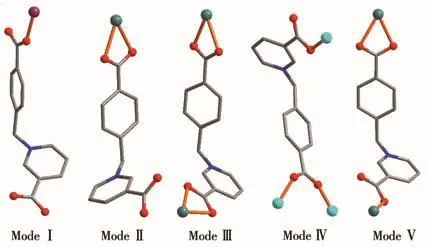
Scheme 3 Coordination modes of L ligand in the reported complexes

Table 5 Comparison of structural parameters of L ligand in the reported complexes
2.4 Thermal and chemical stabilities
The thermal and chemical stabilities of 1 and 2 were studied,which are critical for the potential future application.TG curves of 1 and 2 are shown in Fig.S6.For 1,along with the heating,a weight loss of 15.77%(Calcd.15.89%)were first observed in the temperature region of 30.00?128.42 ℃,which are attributed to the departure of guest and coordinated water molecules.In contrast to 1,all guest and coordinated water molecules of 2 were removed with weight loss of 11.54%(Calcd.10.33%)below 112.09℃.On the other hand,two com?plexes both have high decomposition temperature,261.61℃for 1 and 278.11℃for 2.In addition to high thermal stabilities,1 and 2 also possess good chemical stabilities in acidic,basic and neutral aqueous solu?tions.The powder samples of 1 and 2 were first placed into aqueous solutions with different pH values for 12 h.After filtration,the soaked solid samples were then analyzed by PXRD to verify their chemical stabilities.As shown in Fig.S7 and S8,complex 1 is stable in the solution with a pH value range of 3?9,while 2 is stable in solutions with a pH value range of 4?8.In a word,complexes 1 and 2 have good thermal and chemical stabilities.
2.5 Luminescent property studies
Considering the transparency,indissolubility in common solvents and abundantπ?πinteractions,the solid photoluminescence of complex 2 was investigated in detail at room temperature.The photoluminescence experiment showed that 2 had a narrow maximum emis?sion at 390 nm upon excitation at 350 nm.To further find out the luminescence mechanism,the solid lumi?nescence property of ligand L was also investigated under the same experimental conditions.Interestingly,the spectrum of(H2L)Br ligand displayed a broad emis?sion band centered at 445 nm upon excitation at 370 nm,where there were apparent red shift of 55 and 20 nm for the maximum emission and excitation peaks compared with those of complex 2,respectively(Fig.3).Compared to different fluorescence spectra,solid free(H2L)Br ligand and complex 2 gave comparable absorp?tion bands centered at about 300 nm,which are attrib?uted ton?π*andπ?π*transitions(Fig.S9).It is worth?while that 2 exhibited stronger absorption intensity above 350 nm than free(H2L)Br ligand.Based on above experimental results,namely,narrower and stronger peak and large blue shift for 2,we judge that the luminescence mechanism of 2 is different from that of(H2L)Br ligand.To further elucidate the emis?sion property,luminescence lifetime of complex 2 was investigated.Fig.4 exhibits the decay curve,which cor?responds to three?exponential function accompanied with decay lifetimes of 0.94 ns(16.12%),3.65 ns(79.21%)and 11.36 ns(4.67%),thus proving the pres?ence of three kinds of emissive center(π?π*,LMCT andn?π*)in 2[35?38].In short,the experimental results reveal the structure of 2 has a subtle effect on the final luminescence property.
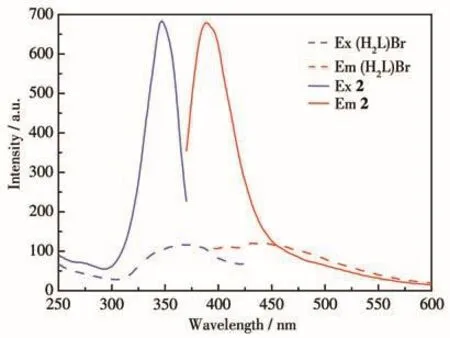
Fig.3 Solid fluorescence spectra of ligand(H2L)Br and complex 2 at room temperature
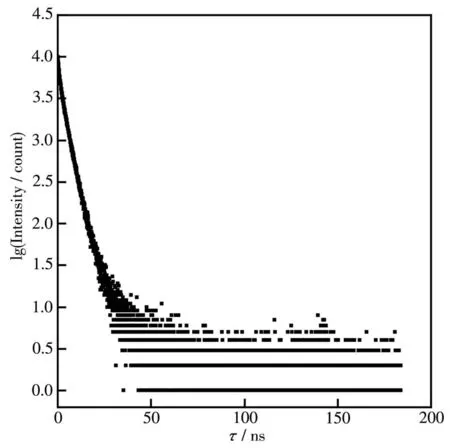
Fig.4 Luminescence lifetime decay curves of complex 2 monitored at 370 nm
3 Conclusions
By utilizing semirigid ligand(H2L)Br,together with Co(Ⅱ) and Cd(Ⅱ) salts,two complexes featuring mononuclear and polymeric 1D chain structures have been successfully created via strong coordination inter?action.Both complexes further assembly into 3D supra?molecular architectures via weak hydrogen bonds andπ?πstacking,indicating that,by carefully selecting ligands,complicated 3D supramolecular architectures can also be generated from the simplest mononuclear coordination entity.Such structure modulation enables us to endow simple 0D and 1D structures with impor?tant functions,such as side?by?side channels which usually appear in 2D or 3D network.Furthermore,the luminescence investigations demonstrate that the struc?tures of crystalline coordination supramolecules have great influence on their photoluminescent properties,which even totally different from those of their building components.
Supporting information is available at http://www.wjhxxb.cn
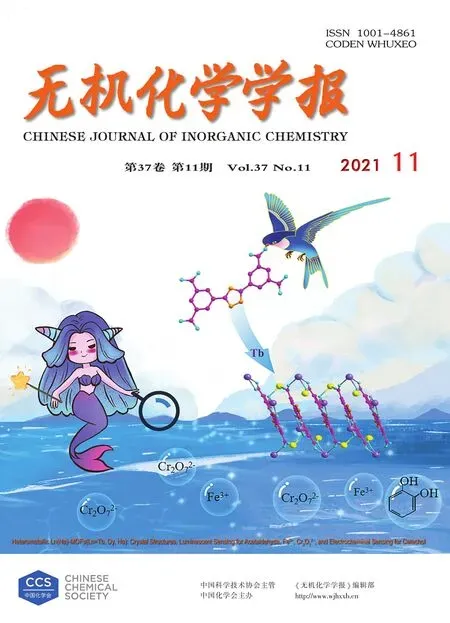 無(wú)機(jī)化學(xué)學(xué)報(bào)2021年11期
無(wú)機(jī)化學(xué)學(xué)報(bào)2021年11期
- 無(wú)機(jī)化學(xué)學(xué)報(bào)的其它文章
- Mn-Based Coordination Polymer:Facile Synthesis,Structure and Application in Glucose Electrochemical Sensing
- Preparation of Dehydrated Ni-Fe Hydrotalcite-like Compounds as an Eco-Friendly Catalyst for Highly Selective Acetalization of Biomass-Derived Furfural
- Synthesis,Structure Regulation and Characterization of Cadmium(Ⅱ)Complexes Based on Imidazole Carboxylic Acid Ligands
- Difunctional Effects of Organo-Modified T-Type Zeolite Membranes for Dewatering from Organic Solution
- Controlling Distribution of Gold Nanoparticles in Au@ZIF-8 Core-Shell Structures for Sensing Fluorescent Molecules with Photoluminescence
- Si摻雜調(diào)控15-冠-5配位Li+機(jī)理的理論研究
